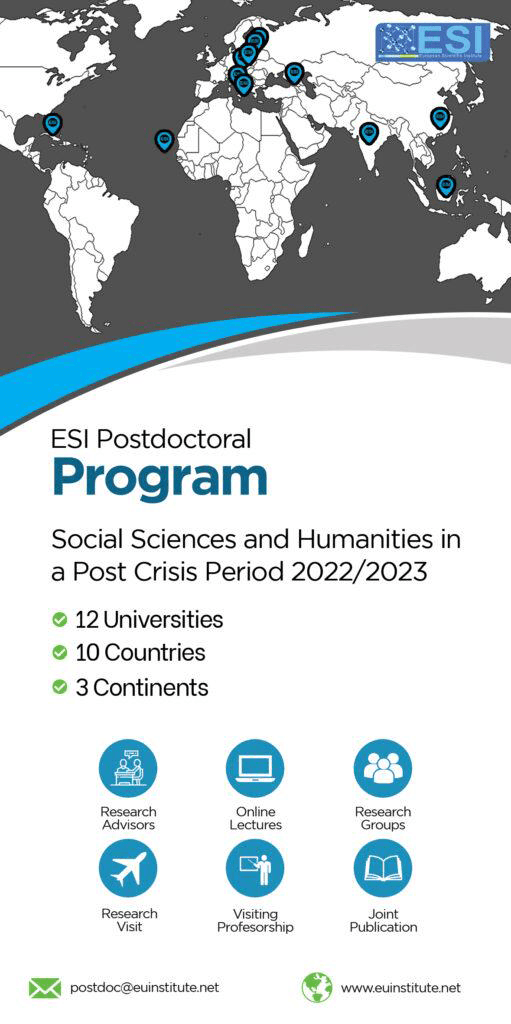Omnichannel Integration and Performance of Large-Scale Retail Stores in Nairobi City County, Kenya
Abstract
The changes in the retailing industry have led to the emergence of omnichannel retailing, which has disrupted conventional retailing. The general objective was to determine the effects of omnichannel retailing on the performance of large-scale stores. The specific objective of the study was to investigate the impact of omnichannel integration on the performance of large-scale retail stores in Nairobi, Kenya. This study was anchored on the Resource-Based View theory and the Unified Theory of Acceptance and Use of Technology. The study used a cross-sectional design using descriptive and explanatory research designs. The large-scale retail stores served as the unit of analysis, while the heads of the marketing, IT, finance, and operations departments served as the units of observation. The pilot testing was conducted on questionnaires before data collection. The reliability of the questionnaire was assessed using Cronbach alpha, and 0.7 level was considered reliable, where the variables in the study were higher than the cut-off. The hypothesis was tested, and conclusions were drawn using multiple linear regression. Content analysis was used to extract meaning and make inferences from qualitative data. For hypothesis testing, the study used P-values and a 5% significance level to assess significance. The finding indicated (p= 0.001 < 0.05) a significance level and coefficient of 0.772, implying that an increase in omnichannel integration, holding all other variables constant at zero, results in a 0.772 increase in the performance of large-scale retail stores. The results of this study showed that omnichannel integration significantly affects the performance of large retail stores.
Downloads
Metrics
References
2. Bennett, D. R., & El Azhari, J. (2015). Omni-channel customer experience: An investigation into the use of digital technology in physical stores and its impact on the consumer's decision-making process. In XXIV AEDEM International Conference. European Academy of Management and Business Economics (AEDEM).
3. Chen, T. Y., Yeh, T. L., Wu, H. L., & Deng, S. (2023). Effect of channel integration quality on consumer responses within omnichannel retailing. Asia Pacific Journal of Marketing and Logistics, 35(1), 149-173.
4. Chen, X., Su, X., Lin, W., Xu, A., Chen, J., & Zheng, Q. (2022). The Effect of Omni-channel Integration on Fresh Food Customer Engagement from the Viewpoint of Flow Experience. Sustainability, 14(21), 13914.
5. D’Oria, L., Crook, T. R., Ketchen Jr, D. J., Sirmon, D. G., & Wright, M. (2021). The evolution of resource-based inquiry: A review and meta-analytic integration of the strategic resources–actions–performance pathway. Journal of Management, 47(6), 1383-1429.
6. Eriksson, E., Norrman, A., & Kembro, J. (2022). Understanding the transformation toward omnichannel logistics in grocery retail: a dynamic capabilities perspective. International Journal of Retail & Distribution Management, 50(8/9), 1095-1128.
7. Ferreira, N. C., & Ferreira, J. J. (2024). The field of resource-based view research: mapping past, present and future trends. Management Decision.
8. Gao, M., & Huang, L. (2021). Quality of channel integration and customer loyalty in omni-channel retailing: The mediating role of customer engagement and relationship program receptiveness. Journal of Retailing and Consumer Services, 63, 102688.
9. Gao, W., Li, W., Fan, H., & Jia, X. (2021). How customer experience incongruence affects omni-channel customer retention: The moderating role of channel characteristics. Journal of Retailing and Consumer Services, 60, 102487.
10. Griffith, D. A., Noble, S. M., & Chen, Q. (2006). The performance implications of entrepreneurial proclivity: A dynamic capabilties approach. Journal of Retailing, 82(1), 51-62.
11. Helfat, C. E., Kaul, A., Ketchen Jr, D. J., Barney, J. B., Chatain, O., & Singh, H. (2023). Renewing the resource‐based view: New contexts, new concepts, and new methods. Strategic Management Journal, 44(6), 1357-1390.
12. Iglesias-Pradas, S., Acquila-Natale, E., & Del-Rio-Carazo, L. (2022). Omnichannel retailing: a tale of three sectors. Economic research-Ekonomska istrazivanja 35(1), 3305-3336.
13. Kopot, C., & Cude, B. J. (2021). Channel Depth or Consistency? A Study on Establishing a Sustainable Omni-channel Strategy for Fashion Department Store Retailers. Sustainability 2021, 13, 6993.
14. Lazaris, C., Sarantopoulos, P., Vrechopoulos, A., & Doukidis, G. (2021). Effects of increased omnichannel integration on customer satisfaction and loyalty intentions. International Journal of Electronic Commerce, 25(4), 440-468.
15. Lee, Z. W., Chan, T. K., Chong, A. Y. L., & Thadani, D. R. (2019). Customer engagement through omni-channel retailing: The effects of channel integration quality. Industrial Marketing Management, 77, 90-101.
16. Li, Y., & Gong, X. (2022). What drives customer engagement in omnichannel retailing? The role of omni-channel integration, perceived fluency, and perceived flow. IEEE Transactions on Engineering Management.
17. Li, Y., Tan, R., & Gong, X. (2023). How omnichannel integration promotes customer word-of-mouth behaviors: the mediating roles of perceived personal preference fit and perceived social relatedness. Information Technology & People, 36(4), 1726-1753.
18. Lynch, S., & Barnes, L. (2020). Omnichannel fashion retailing: examining the customer decision-making journey. Journal of Fashion Marketing and Management: An International Journal, 24(3), 471-493.
19. Moderno, O. B. D. S., Braz, A. C., & Nascimento, P. T. D. S. (2024). Robotic process automation and artificial intelligence capabilities driving digital strategy: a resource-based view. Business Process Management Journal, 30(1), 105-134.
20. Mugenda, O. & Mugenda, A. (2003). Readings in research methods. Quantitative and Qualitative Approaches. (2nd ed.) Nairobi: Africa Centre for Technology Studies Press.
21. Mugenda, O. & Mugenda, A. (2008). Research methods: Quantitative and Qualitative Approaches. Nairobi: Africa Centre for Technology Studies Press.
22. Nguyen, H. N. (2021). Channel Integration Quality, Customer Experience and Patronage in Omni-channel Retailing. (JDS), 19, 23-32.
23. Nguyen, N. M. H., & Borusiak, B. (2021). Using utaut2 model to examine the determinants of omnichannel technology acceptance by consumers. LogForum, 17(2), 231-241.
24. Reguraman, M., & Subbiah, G. (2019). Omni-channel e-tailing: Dynamics of consumer purchase decision behaviour. Pacific Business Review International, 11(7), 7-14.
25. Ren, X., Windle, R. J., & Evers, P. T. (2023). Channel transparency and omnichannel retailing: The impact of sharing retail store product availability information. Journal of Operations Management, 69(2), 217-245.
26. Riaz, H., Baig, U., Meidute-Kavaliauskiene, I., & Ahmed, H. (2021). Factors effecting omni-channel customer experience: evidence from fashion retail. Information, 13(1), 12.
27. Savastano, M., Bellini, F., D’Ascenzo, F., & De Marco, M. (2019). Technology adoption for the integration of online–offline purchasing: Omnichannel strategies in the retail environment. International Journal of Retail & Distribution Management, 47(5), 474-492.
28. Savisaari, A. (2016). Supply chain effects in creation of omnichannel customer experience in grocery retail.
29. Schober, P., Boer, C., & Schwarte, L. A. (2018). Correlation coefficients: appropriate use and interpretation. Anesthesia & Analgesia, 126(5), 1763-1768.
30. Shen, X. L., Li, Y. J., Sun, Y., & Wang, N. (2018). Channel integration quality, perceived fluency and omni-channel service usage: The moderating roles of internal and external usage experience. Decision Support Systems, 109, 61-73.
31. Taherdoost, H. (2016). Sampling methods in research methodology; how to choose a sampling technique for research. International journal of academic research in management (IJARM), 5.
32. Wollenburg, J., Holzapfel, A., Hübner, A., & Kuhn, H. (2018). Configuring retail fulfillment processes for omni-channel customer steering. International Journal of Electronic Commerce, 22(4), 540-575.
Copyright (c) 2025 Simon Kanoga, Maina Samuel, Njuguna Reuben

This work is licensed under a Creative Commons Attribution 4.0 International License.








